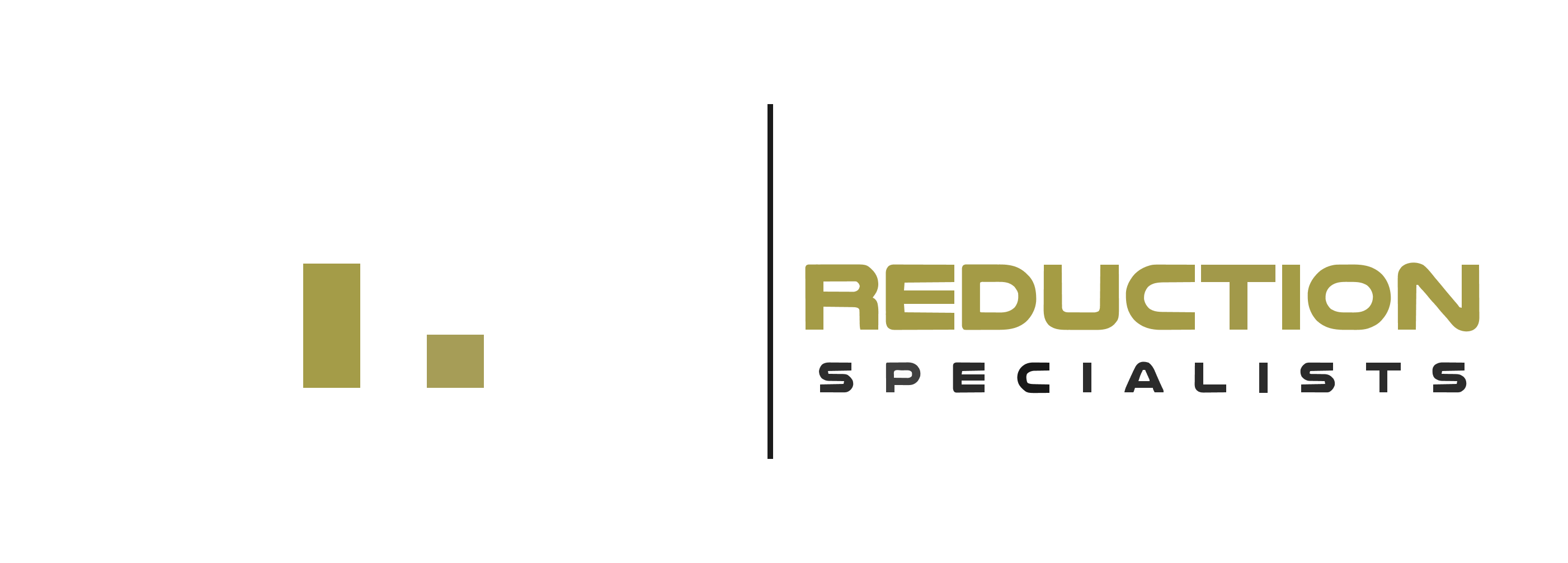10 Things Investors Must Know About Opportunity Zone Tax Advantages
Looking to maximize your investment returns while enjoying significant tax benefits? Opportunity Zones might be your golden ticket. The Opportunity Zone program, established by the 2017 Tax Cuts and Jobs Act, offers investors a powerful way to defer, reduce, and potentially eliminate capital gains taxes. Whether you’re a seasoned investor or just starting out, understanding these tax advantages is crucial for making informed investment decisions. From temporary tax deferrals to permanent exclusions on new gains, we’re about to uncover 10 essential things you need to know about Opportunity Zone tax benefits. Did you know that investors with qualified investments held for 10+ years can completely eliminate taxes on their appreciation gains? Ready to dive into the world of tax-advantaged investing? Let’s explore how you can leverage these benefits while contributing to economic development in designated communities.
Key Takeaways:
- – Investors can defer capital gains taxes by reinvesting their gains into Qualified Opportunity Funds, offering immediate tax relief and long-term growth potential.
- – The program provides three main tax benefits: temporary tax deferral, partial tax reduction on original gains, and permanent exclusion of new gains after 10 years.
- – Investments in low-income communities through Opportunity Zones support economic development while creating tax-advantaged returns for investors.
- – Qualified Opportunity Funds serve as the primary investment vehicle, allowing investors to pool resources for real estate projects and small business investments.
- – The tax incentive structure rewards long-term investment commitments, with the most significant benefits available to those who hold their investments for at least 10 years.
Understanding Qualified Opportunity Zones
Qualified Opportunity Zones represent specially designated areas across the United States that offer unique tax advantages for investors. These zones, established by the 2017 Tax Cuts and Jobs Act, aim to stimulate economic growth in underdeveloped communities while providing substantial tax benefits to investors.
Geographic Coverage
These zones span across all 50 states, the District of Columbia, and U.S. territories. Each zone has been carefully selected through a nomination process by state governors and certified by the U.S. Treasury Department. They typically represent economically distressed communities that could benefit from private investment.
Selection Criteria
The selection of Opportunity Zones follows specific economic indicators. Areas must have a poverty rate of at least 20% or median family income below 80% of the surrounding area’s median income. This ensures that investments flow into communities that truly need economic development.
Investment Requirements
To participate in the program, investors must channel their capital gains through Qualified Opportunity Funds. These funds must maintain at least 90% of their assets in Qualified Opportunity Zone property, whether it’s real estate, business equipment, or stock in companies operating within these zones.
Program Duration
While Opportunity Zones are permanent fixtures in their designated locations, the tax benefits associated with investments have specific timelines. The program encourages long-term investment commitment, with the most substantial benefits available to those who maintain their investments for at least 10 years.
???? Key Takeaway: Qualified Opportunity Zones are government-designated areas offering tax benefits to investors who contribute to economic development, covering all U.S. states and territories, with specific investment requirements and duration commitments.
Tax Benefits of Opportunity Zone Investments
The tax advantages of investing in Opportunity Zones make them an attractive option for investors looking to minimize their tax burden while supporting community development. Let’s explore the three primary tax benefits that make these investments particularly appealing.
Capital Gains Tax Deferral
When you invest your capital gains into a Qualified Opportunity Fund, you can defer paying taxes on those gains until December 31, 2026. This temporary deferral allows you to keep more money working for you in the investment rather than paying it to the IRS immediately. For instance, if you sell stocks with $100,000 in capital gains and invest that amount in an Opportunity Zone fund, you won’t owe taxes on those gains until 2026.
Basis Step-Up Benefits
The longer you hold your Opportunity Zone investment, the more tax benefits you can unlock. After holding the investment for 5 years, you receive a 10% step-up in basis on your original deferred gain. This means you’ll only pay taxes on 90% of your initial capital gains. Hold for 7 years, and you’ll get an additional 5% step-up, reducing your taxable gains to 85% of the original amount.
Permanent Exclusion of New Gains
Perhaps the most compelling benefit is the potential for permanent exclusion of gains on your Opportunity Zone investment appreciation. If you maintain your investment for at least 10 years, any gains from the appreciation of your Opportunity Zone investment become completely tax-free when you sell. This powerful incentive encourages long-term investment in these communities while offering significant tax savings.
For example, if you invest $500,000 in an Opportunity Zone project and it grows to $1 million over 10 years, you won’t owe any taxes on that $500,000 appreciation when you sell the investment. This benefit applies only to the gains earned within the Opportunity Zone investment, not the original deferred gains.
???? Key Takeaway: Opportunity Zone investments offer three significant tax benefits: capital gains tax deferral until 2026, basis step-up benefits of up to 15%, and complete tax exemption on new gains after 10 years of holding the investment.
Qualified Opportunity Funds Explained
Qualified Opportunity Funds (QOFs) serve as the gateway to investing in Opportunity Zones. These specialized investment vehicles are designed to channel capital into designated distressed communities while offering significant tax advantages to investors.
Structure and Requirements
QOFs must be organized as corporations or partnerships specifically for investing in Qualified Opportunity Zone property. The fund must maintain at least 90% of its assets in qualified Opportunity Zone investments, which includes property, businesses, or business assets within designated zones.
Investment Timeline
When investing in a QOF, you must use capital gains from a previous investment within 180 days of realizing those gains. This strict timeline ensures that investors act promptly to take advantage of the tax benefits while maintaining program compliance.
Types of Investments
QOFs can invest in various qualifying assets:
– Commercial and residential real estate development
– New business ventures within Opportunity Zones
– Existing businesses looking to expand or relocate to these areas
– Infrastructure projects benefiting the designated communities
Management and Oversight
Professional fund managers typically oversee QOFs, handling due diligence, property selection, and ongoing compliance requirements. Regular reporting and asset testing ensure the fund maintains its qualified status and investors retain their tax benefits.
Risk Considerations
While QOFs offer attractive tax benefits, they come with inherent risks:
– Limited liquidity due to long-term investment requirements
– Dependence on local market conditions
– Potential changes in tax laws or regulations
– Project-specific risks in development or business operations
???? Key Takeaway: Qualified Opportunity Funds are specialized investment vehicles requiring 90% asset allocation in Opportunity Zones, offering tax benefits while supporting community development through various investment types.
Investment Types and Requirements
Eligible Investment Categories
Opportunity Zones welcome diverse investment types, primarily focusing on real estate development and business ventures. Real estate investments must involve substantial property improvements, requiring the investment value to exceed the original purchase price. Business investments can include new startups, expansions of existing companies, or equipment purchases within qualified zones.
The program allows investments in commercial properties, residential developments, industrial facilities, and mixed-use projects. However, certain businesses like golf courses, country clubs, massage parlors, and liquor stores are specifically excluded from eligibility.
Investment Requirements and Deadlines
To participate in the Opportunity Zone program, investors must follow specific guidelines. Capital gains must be invested within 180 days of realization through a Qualified Opportunity Fund. These funds must maintain at least 90% of their assets in qualified zone properties or businesses.
For real estate investments, the substantial improvement requirement mandates that property improvements must double the initial investment within 30 months. For example, if a building is purchased for $1 million, an additional $1 million must be invested in improvements.
Business investments must ensure that at least 50% of their gross income comes from active business operations within the Opportunity Zone. Additionally, at least 70% of tangible business property must be used within the zone.
The investment timeline is crucial – while gains can be deferred until 2026, the most significant benefits come from holding investments for at least 10 years. This long-term commitment allows investors to maximize tax advantages while contributing to community development.
???? Key Takeaway: Opportunity Zone investments focus on real estate and business ventures, requiring substantial improvements and specific timing requirements, with the most significant tax benefits achieved through long-term holdings of 10+ years.
Investment Impact Analysis
The Opportunity Zone program has shown mixed results in terms of its investment impact across different communities and sectors. While substantial capital has flowed into designated zones, the distribution and effectiveness of these investments vary significantly.
Investment Distribution Patterns
Real estate investments dominate the Opportunity Zone landscape, accounting for approximately 68% of all investments. This concentration in real estate development has created a noticeable imbalance, with other sectors like finance, insurance, and operating businesses receiving considerably less attention from investors.
Urban vs Rural Impact
A striking 95% of Opportunity Zone investments flow into urban areas, leaving rural communities largely underserved. This urban-centric pattern raises questions about the program’s ability to stimulate economic growth in rural distressed communities that equally need revitalization.
Geographic Concentration
Western states and the District of Columbia have emerged as primary beneficiaries, receiving disproportionate shares of Opportunity Zone investments. This uneven distribution suggests that existing market dynamics and investor preferences play a significant role in investment decisions, potentially overshadowing the program’s intended goal of uplifting truly distressed areas.
Economic Indicators
Studies reveal that zones receiving investments often have higher median incomes and lower unemployment rates compared to other eligible zones. This trend indicates that investors tend to favor areas already showing signs of economic improvement, rather than targeting the most disadvantaged communities.
Community Development Outcomes
While some zones have experienced increased property values and business activity, the direct benefits to low-income residents remain limited. Employment growth and poverty reduction in invested zones have shown modest improvements, suggesting a gap between the program’s intended impact and actual community development outcomes.
???? Key Takeaway: Opportunity Zone investments show a strong bias toward urban real estate projects in economically stronger areas, potentially limiting the program’s effectiveness in achieving comprehensive community development across all eligible zones.
Investment Timing Considerations
The timing of your Opportunity Zone investment plays a crucial role in maximizing tax benefits. Understanding these timing considerations can help you make informed investment decisions and optimize your returns.
180-Day Investment Window
After realizing capital gains from selling an asset, you have 180 days to invest those gains into a Qualified Opportunity Fund. This window gives you time to evaluate potential investments while maintaining eligibility for tax benefits. However, missing this deadline means losing the opportunity to defer and potentially reduce your tax liability.
Key Investment Deadlines
The program’s structure includes several important deadlines that affect your tax benefits. To receive a 10% reduction in deferred capital gains tax, you must hold your investment for at least 5 years before December 31, 2026. This date is significant because all deferred gains become taxable then, regardless of how long you’ve held the investment.
Long-term Investment Benefits
While shorter holding periods offer some advantages, the most substantial benefits come from long-term investments. Holding your investment for 10 years or more allows you to eliminate capital gains taxes on any appreciation in your Opportunity Zone investment, potentially leading to significant tax savings.
???? Key Takeaway: Timing is critical in Opportunity Zone investments – invest within 180 days of realizing gains, consider the 2026 tax recognition deadline, and aim for a 10-year hold to maximize tax benefits.
Risk Factors and Considerations
Investing in Opportunity Zones comes with its own set of challenges and potential pitfalls that investors should carefully evaluate before committing their capital gains.
Market Volatility
The real estate and business markets within Opportunity Zones can be particularly volatile. These designated areas are typically economically distressed communities, which may experience more significant market fluctuations than stable, developed areas. This volatility can directly impact your investment returns and overall portfolio performance.
Liquidity Constraints
One of the most significant considerations is the limited liquidity of Opportunity Zone investments. To maximize tax benefits, you need to hold your investment for at least 10 years. This extended holding period means your capital will be tied up, potentially limiting your ability to respond to other investment opportunities or financial needs.
Regulatory Compliance
Maintaining compliance with Opportunity Zone regulations requires careful attention to detail. The rules around substantial improvement requirements, investment timelines, and fund structure are complex. Any compliance failures could result in the loss of tax benefits and potential penalties.
Economic Development Risks
While Opportunity Zones aim to stimulate economic growth, there’s no guarantee that the targeted areas will develop as anticipated. Some zones may face persistent challenges such as:
– Limited infrastructure development
– Slow population growth
– Weak local business environment
– Insufficient community support
Due Diligence Requirements
Proper due diligence is crucial but can be more challenging in Opportunity Zones. You’ll need to thoroughly evaluate:
– Local market conditions
– Property or business fundamentals
– Development potential
– Exit strategies
– Management team expertise
???? Key Takeaway: Opportunity Zone investments require careful consideration of market volatility, liquidity constraints, regulatory compliance, and thorough due diligence to mitigate risks while pursuing tax advantages.
Conclusion
Opportunity Zones represent a powerful intersection of smart investing and community development, offering investors a unique chance to grow their wealth while making a meaningful impact. By understanding these ten essential tax advantages, you’re better equipped to make informed decisions about incorporating Opportunity Zone investments into your portfolio. Remember, the key benefits include capital gains tax deferral until 2026, potential tax reduction through basis step-ups, and complete tax elimination on new gains for investments held for at least ten years. Whether you’re interested in real estate projects, small business investments, or other qualified opportunities, these tax incentives can significantly enhance your long-term returns while supporting economic development in low-income communities. Ready to explore Opportunity Zone investments? Consider consulting with a qualified tax professional to understand how these benefits align with your investment strategy. Your next investment could not only yield substantial tax advantages but also contribute to meaningful community transformation.
FAQs
What happens if I sell my Opportunity Zone investment before the 10-year holding period?
If you sell your investment before the 10-year mark, you’ll lose the tax benefits associated with the long-term capital gains exclusion. You’ll need to pay regular capital gains tax on any appreciation of your investment, and you may also trigger the deferred taxes from your initial capital gain.
Can I invest in multiple Opportunity Zones simultaneously?
Yes, you can invest in multiple Qualified Opportunity Funds that target different Opportunity Zones. This strategy allows for portfolio diversification across various low-income communities and real estate projects while maintaining tax benefits for each qualified investment.
How do I verify if a specific location qualifies as an Opportunity Zone?
You can verify eligible areas using the Treasury’s Office online mapping tool or by checking the official IRS census tract listings. These resources provide up-to-date information about designated Opportunity Zones across different urban areas and low-income communities.
Is there a minimum investment amount required for Opportunity Zone investments?
There is no statutory minimum investment amount for Opportunity Zones. However, most Qualified Opportunity Funds set their own minimum investment thresholds based on their investment vehicle structure and the scale of their real estate projects or business investments.
Can foreign investors participate in Opportunity Zone investments?
Yes, foreign investors can participate in Opportunity Zone investments, but they must have U.S.-sourced capital gains and file U.S. tax returns to qualify for the tax incentives. The investment must be made through a Qualified Opportunity Fund following IRS guidelines.
What types of businesses are excluded from Opportunity Zone investments?
Certain “sin businesses” are excluded from Opportunity Zone investments, including golf courses, country clubs, massage parlors, hot tub facilities, suntan facilities, racetracks, or other gambling facilities. These restrictions help ensure investments benefit the local economic development.







